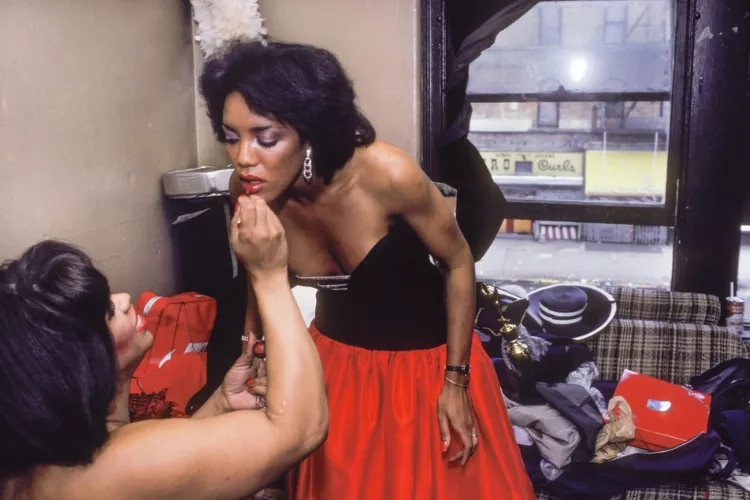What is it about a heavily-patched pair of pants or a worn-in t-shirt with someone’s name written in the tag that draws us to a vintage garment?
When I met Garret Miller, the vintage dealer at Western Gifts, during A Current Affair’s Brooklyn show this spring, I felt a fondness for his collection of American and European work wear. It was down-to-earth; the work wear had clearly been worn and well cared for, and some pieces had meticulous visible mends that I found beautiful. As I wandered the towering industrial warehouse complex – filled with vintage! – it was these very human pieces with their hand-done touches that caught my eye.
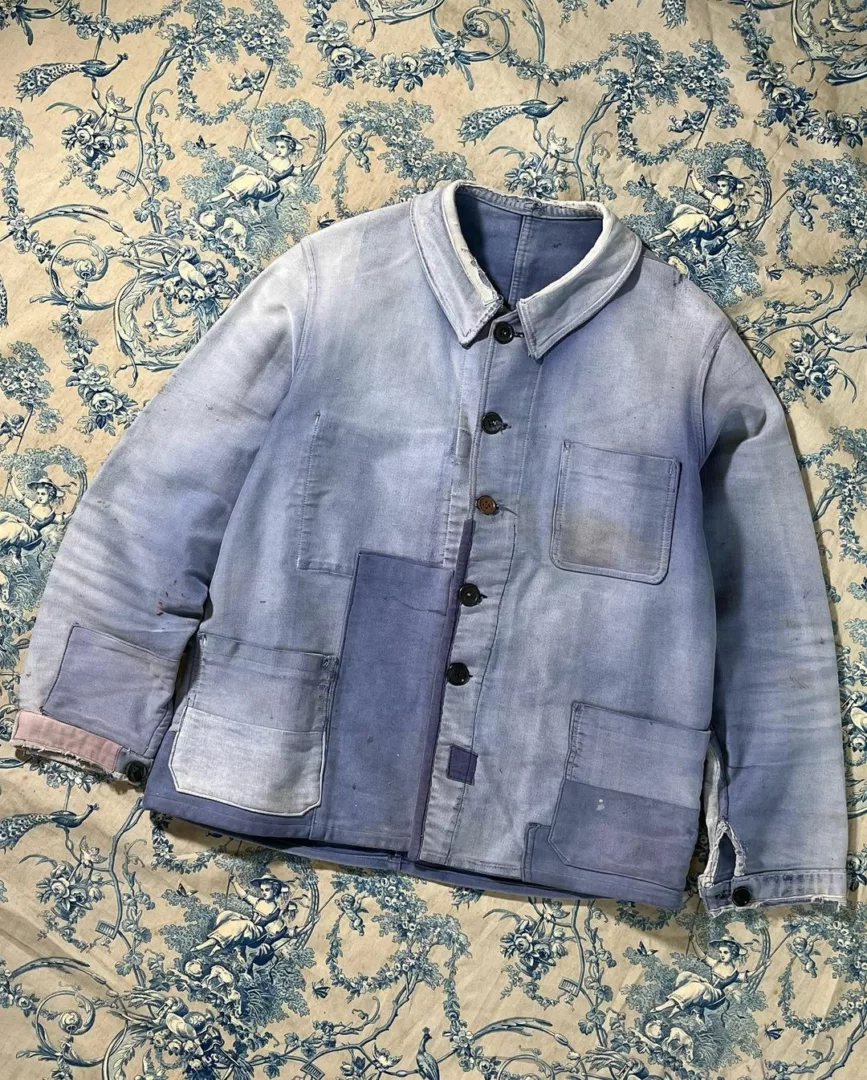
I was not alone in this – time and time again throughout the show, vintage dealers told me their customers were gravitating toward pieces with “hand-done elements” – visible mends, embroidery, patches, and other personalizations – more than anything else this season.
Fashion repeats itself, and throughout history, we have experienced other waves of people sporting noticeably mended, crafted, or “pre-loved” garments.
These waves tend to follow periods of economic depression, for example, in the 1930s-40s “make-do-mend” era (a slogan launched alongside war-time clothes rationing) or the boom of garage sales and craft aesthetics in the 1970s. Even most recently, the post-2008 recession ushered in the rise of early secondhand online marketplaces, and the pandemic era saw everyone downloading Depop in droves. According to the latest ThredUp Resale Report, 94% of today’s consumers are concerned with inflations’ impact on their day-to-day finances, affecting how they shop for clothing, with secondhand fashion becoming an increasing share of their wallet’s spend.
“Make-do” mending
According to mend historian Kate Sekules, “During the centuries when mending was not an aesthetic choice but a necessity, obvious repair was despised as a marker of poverty rather than valued and collected as an artifact or fashion inspiration.” And Miller agrees. The French workwear that is his specialty often features visible mending. Still, he believes it was utterly utilitarian in its time – based on the necessity and not necessarily perceived as artful.
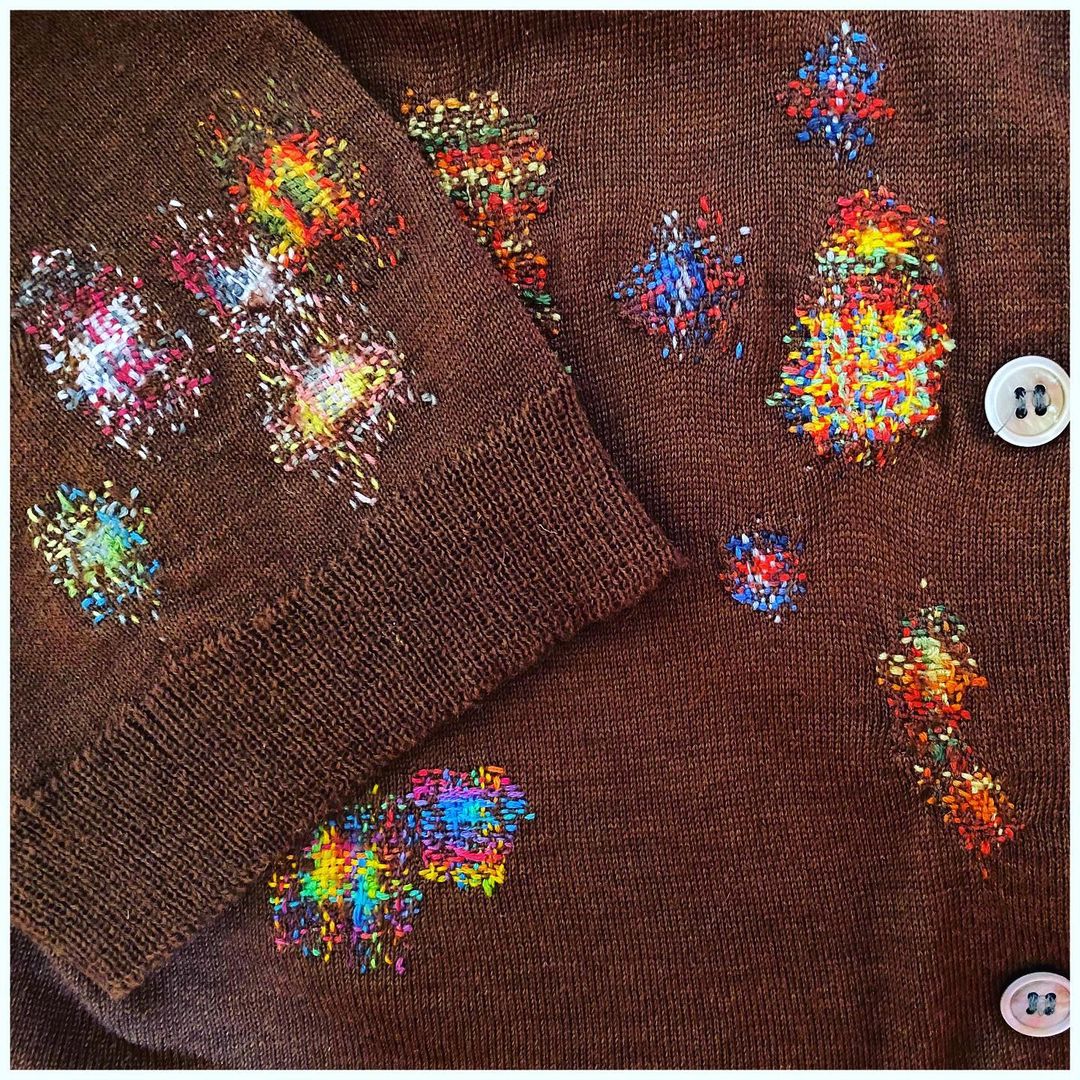
“You see a lot of hand-done elements – such as darning, patching, and “make-do” repairs – on these pieces because they were worn for manual labor,” he tells me. Much of Miller’s workwear originates from rural regions in the south of France, where “it’s not like you could just go to the department store and easily buy another set of clothes – if you could afford that in the first place! So people did what they had to do to make things last.”
A Moral Imperative
In my many Pre-Loved Podcast interviews, countless people have confessed that they were once ashamed to shop secondhand out of familial necessity during childhood. But in the last decade, they have watched the transformation as thrift shopping became cool. Now, secondhand shopping is like a badge of honor for some, motivated by the moral of avoiding the sweatshop labor associated with the big fast fashion industry.
This morality appeal has been the case with visibly-mended and pre-loved clothing before. In Kate Sekules’ book Mend: A Refashioning Manual and Manifesto, she describes a 1915 Vogue article featuring a pair of heavily patched pants – mending clothing like this was considered “a proclamation of generosity toward a suffering Europe” during the time of World War I.
Austerity was an honorable trait in these periods, and people felt more comfortable wearing their thriftiness on their sleeves. Again during the Great Depression, feed sack dresses – simple shift dresses made from grain or flour sack packaging – became so popular that it was common for flour brands to switch up their packaging with patterns of gingham, pastels, and florals for fashionable appeal. In recent years, similar “upcycled” feed sack clothing has become popular – think BODE or 3 Women Co. – and the aesthetic once again has moral underpinnings; this time, the wearer is portraying an “anti-waste” sensibility in a world plagued by the climate crisis.
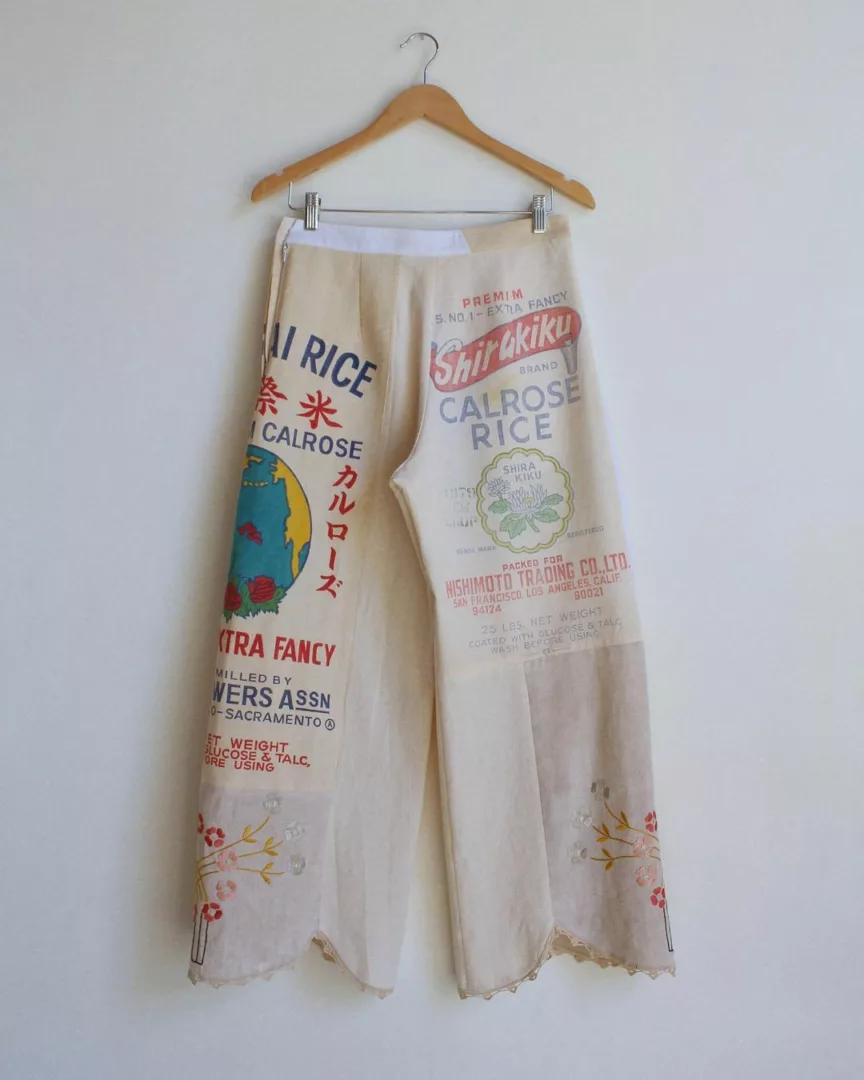
Alana Rivero is the vintage dealer behind Mercadillo Vintage, based in Cancún, Mexico. She has sold vintage for over a decade, but when she started, she worried about selling garments with noticeable wear or restoration. “I worried repairs would be perceived as flaws and thought I could only sell pieces that appeared as good as new.”
Times have changed – the vintage movement at that time was not as popular as it is today. Back then, she said, “I was trying to compete with boutiques and the mall!”
Throughout her career, Rivero’s mother has always repaired Mercadillo’s vintage. Together they care for every garment: washing it, ironing or steaming it, and fixing any damages, like missing buttons. Because Rivero worried about making a case for pieces with “the little quirks,” they would initially attempt to cover any hand-done touches to minimize or hide them.
“I was worried that no one would want to buy the piece, even just because of a name written in the tag, because, by that, you could tell it had been worn before,” she said.
No matter what, if a garment has visible repairs – even a replaced button – Rivero points it out to the customer before purchasing to ensure they noticed the fix and are okay with it. “It used to be that those pieces would sit for a while – it took a bit for them to find the right person.” But this is shifting. Her customers have become more focused and discerning when looking over pieces and spend more time in the clothing racks overall.
A Slow fashion shift
“I used to have clients who would pile up a bunch of stuff to buy and not even try it on – because, if the price is good, they would just buy it!” Rivero told me. She described it as a classic “fashion haul mindset,” where customers would try to find as many pieces as possible in one shopping excursion. However, over the last ten years, she’s seen those same customers (and similar demographics) slow down their shopping.
She says, “They’re shopping with more intention, and because of that, they’re more aware of the little details.” And, in turn, they’re recognizing the hand-done touches on the garment and realizing that those things make the piece more interesting or unique.
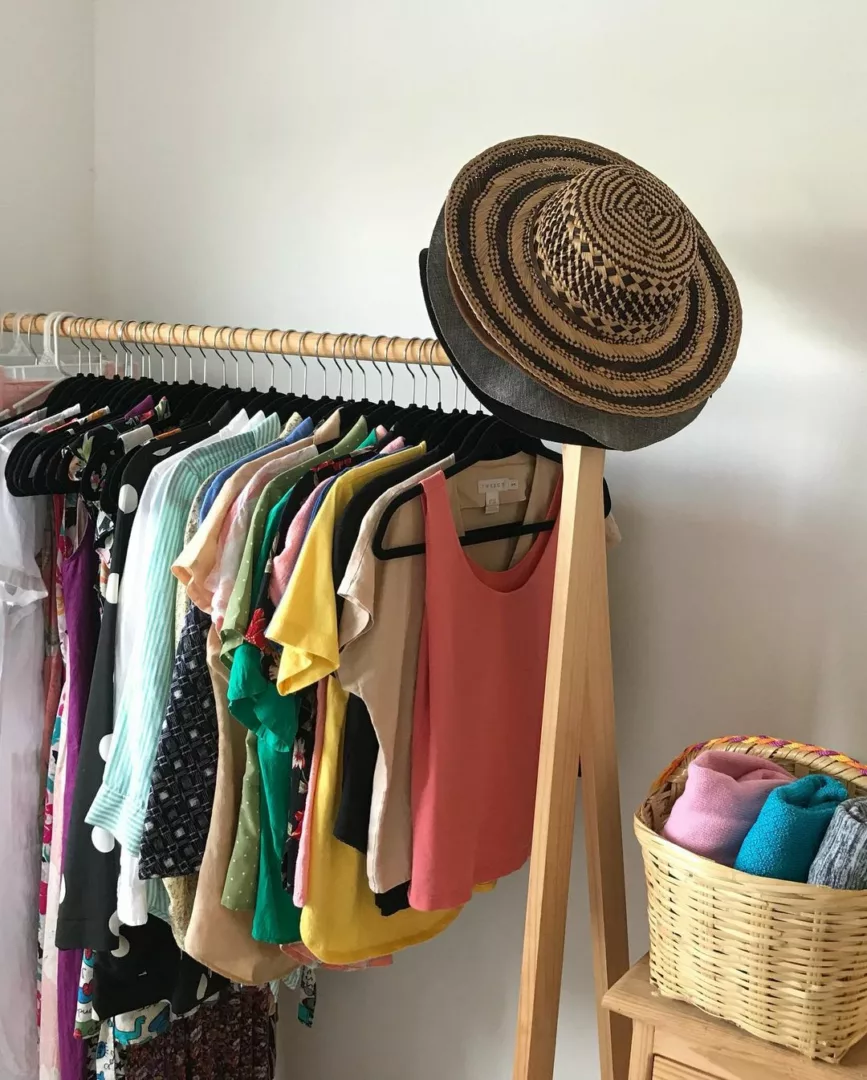
Rivero said customers now recognize something like a replaced button and say, “That’s so cool!” Or, they ask if she does the repairs herself or if she knows the story about how it got there.
Miller agrees that the most heavily-repaired pieces in a collection can take a long time to find the right home – “either people love it, or they don’t understand it.” He recently sold a hand-darned cardigan at Brimfield Flea Market, which had been repaired so many times, and with so many different colors of thread that it was almost completely unrecognizable from the original garment.
“You couldn’t tell where it began or ended because it had repair, over repair, over repair – so many layers over time.” He guessed the cardigan was from the 1930s-50s, most likely from the 1940s. “But it was nearly impossible to tell because the actual garment had been repaired so much, so little of the original left. I wish I knew how many hours had been spent on it. It was almost a physical extension of the person who owned it.” He sold the piece to a textile school teacher in Spain.
These well-loved and hand-repaired vintage garments can be studied like folk art: we appreciate them in a decorative sense today, but they withstood the test of time because of their practical utility.
Miller finds hand-done elements can make even the most uniform military garments feel unique, subverting the “strict uniformity of the military.” Despite the uniforms being made the same for a broad range of people, hand-done repairs show an individual’s work.
“They cannot hide that someone had their specific hands on it.”
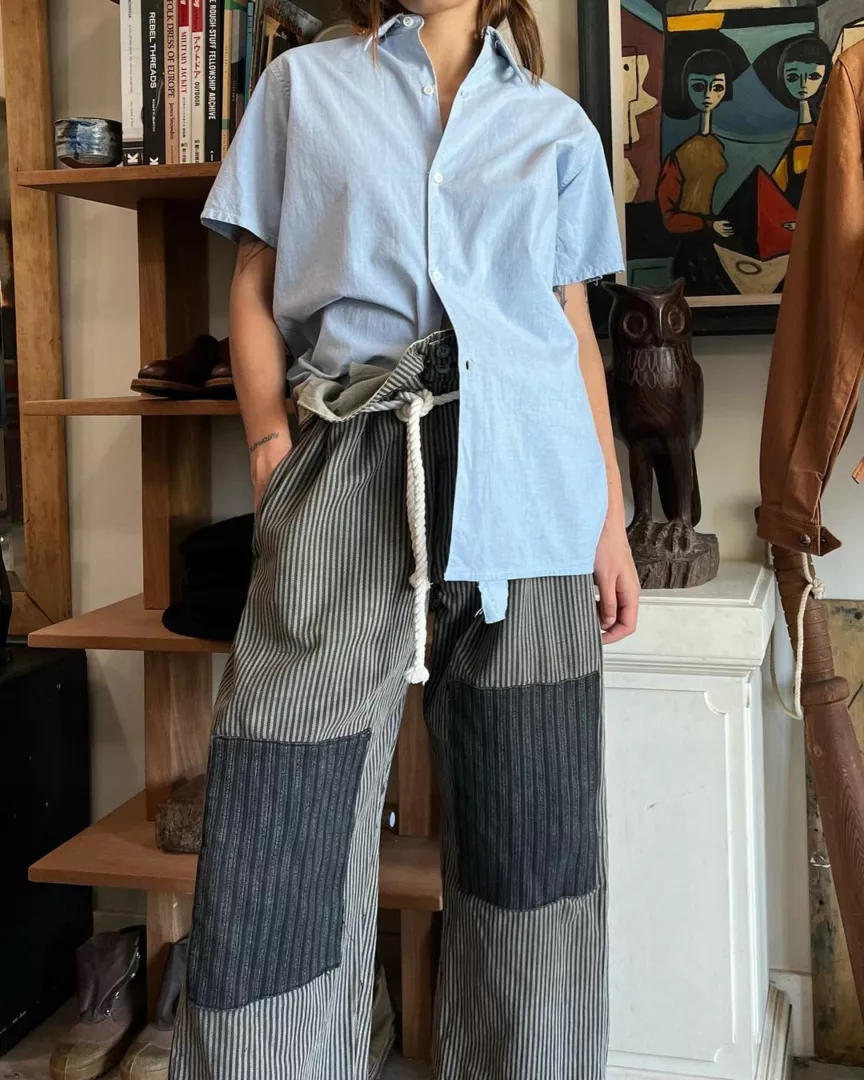
Take, for example, a pair of French workwear pants with a patch on just the left knee. “That’s because they only kneeled on their left knee to do whatever work they were doing,” Miller said, “and as a result, the left knee on this otherwise uniform piece is completely worn out. And they’ve repaired it over and over again. It’s just the nature of us being unique human beings with these little intricacies – you can’t even hide your person if you wanted to!”
“That kind of thing is extremely interesting to me because it has a story. It took a long time for that story to form,” Miller emphasizes, “all the long hours a person wore the garment while working, and then they would go home with it in the evening, and spend more time preserving it.”
Hand-done mends indeed remind us that there was a mender – a person behind the stitches. They represent an individual hand and make us think about these human stories.
Though most clothing made today is still produced by people – not machines – the largest fast fashion brands intentionally render the garment’s maker invisible. These companies aim to produce millions of garments a year, at the lowest price, for the broadest range of people. And they don’t want customers to think of a person with a personal story existing behind every garment, even though that is still the reality.
But when we spot hand-done touches on cared-for vintage – a replaced button, a name in a tag, or a patch on the knee – it reminds us that there are people connected to every piece of clothing: the maker, the mender, the person who loved the garment first, and now, us.
–Emily Stochl
Emily is the host and creator of Pre-Loved Podcast as well as a writer, storyteller, educator, vintage seller, and activist, working to make fashion a force for good!
Related Articles






